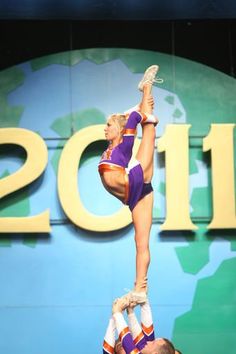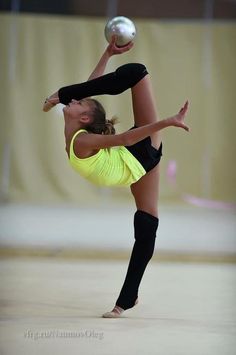- Apr 2, 2011
- 2,210
- 4,494
Interested!
Okay but don't say I didn't warn you

This is going to be long as hell and I work soon lol so I'm going to do "part 1: how to spot an unsafe scorpion", now and I'll go over all the stretches and exercises when I get back from work!
I want to start by saying I am not an orthopedist, nor am I a world champion rhythmic gymnast or circus acrobat. Everything I learned I learned from other coaches who learned from other coaches (like any sport) so it is up to you to decide what is best/safe for you/your child.
BUT, once someone pointed all this out to me it all seemed really obvious honestly, I had just been blinded by "that's how everyone does it so it must be okay".
If you've ever worked in gymnastics you know that the only thing a gymnastics coach loves more than complaining about the post-olympic rush of new athletes who's mom is positive they will be the next Simone Byles is complaining about how cheer is a dangerous death trap that's stealing all their athletes - so I was constantly getting ear fulls.
I see this one a ton so I want to restate it really quick with an example. Your scorpion should never actually lay down completely on your back, that is not physiologically possible to do while keeping your leg in the proper position. If you see someone with their scorpion laying on them, it isn't laying on their back it's laying on their side - and that is NOT a safe position.
If you look at a scorpion like this:

You can see her shoe turned out and her knee is completely to the side. On top of that she is lifting her left hip and leaning into the scorpion to get it closer to it instead of bringing it to her. Often times people that do scorpions like this will have one half of their ribs sticking out in a way that looks unnatural. Any time you see ribs protrude like that it's a pretty clear indication that a small part of their back is bearing an unevenly large portion of the force thats coming from pulling the scorpion.
A needle is supposed a split that is stood up. So just like in the splits where you don't want to roll your leg out and you want your hips squared, the same rules apply to a scorpion. If you look at them from behind the inside of their leg should be in line with the side of their spine and should go straight up and down. That means that even if her leg/foot is facing the right direction, they may still be pulling it sideways or leaning into their leg.
If you look at their needle while standing behind them and the line from their hips up their leg through their big toe is diagonal then they are either A) pulling the scorp sideways B) their hips aren't aligned or C) they're leaning into the stretch.
If you compare the previous photo to this:

You can see that the lines in her torso look more even/concentric and it doesn't look like one side is being stretched significantly more than the other, her ribs aren't protruding at a 90* angle, and she isn't leaning to the left into her leg.
Another big problem when stretching is that people leave both hands on one side of the leg instead of regripping with their left hand when they get to the top (I think it's so it is easier to grab and open to a scale). That's fine in a competition when you may only have 6 counts to go from a lib to a scorp to a scale before the dismount, but if you're constantly stretching like at home then by the time you get to a needle it looks like this:

Like the first one, look at the angle of her ribs. Stretching this position puts a lot of stress on your hips and your mid back which gets pushed out away from the leg. Sure, it makes for a clean transition to a scale, but a scale and a scorpion are two different body positions and should look like two different body positions. If you pull a scorp and open to scale and the only thing that moves is your right arm then your scorpion is 100% being pulled from your side. Instead, you should regrip as you pull the scorpion to have one hand on each side when you stretch at home/practice, and reserve this grip just for when you're in the air.
Next up, and I know I keep saying this, but back flexibility needs to be shared throughout the ENTIRETY of your back/shoulders/arms/ and hips. There are tons of cheerleaders who wanted a needle so to get it they would pull a scorpion every day over and over and it gradually goes up, but they never did stretches for the rest of their back, for their shoulders, their hips, or for their neck.
By the time the scorpion is straight it looks like this:

If you look at the girl on the right you can see that a very small portion of her back is bending while the rest is staying pretty neutral which is putting FAR too much stress on a small portion of her back.
Now compare it to a scorpion like this:
Obviously because of the rib cage the lower back will always get the most of the stretch and that is where you will always see the majority of the curve, but look at the line from her hips to her hands, its a smooth even curve without any harsh angle.
The final problem that's coming to mind is probably actually the worst one and I honestly feel like it's industry wide issue:
Just because you have the flexibility to physically pull a scorpion does not mean you are physically ready to pull a scorpion.
Just like in ballet, where you can't go on pointe until you build the strength in your ankles to support the skill you are working on, flexibility of all kinds (but especially backs since they don't tend to go back straight once you train a curve into them) need to first be supported by muscles trained and strengthened to handle the stretch and to support your skeleton through the skill.
Look at this as an example:

Now I am by no means saying your daughter needs a hands free scorpion. But think about it, how many world class cheerleaders can do a bow an arrow but can't do a free stretch? How many cheerleaders have a needle but have to drop their chest past their hips to get an arabesque thats above level?
How often have you seen cheerleaders discussing their 45 minute daily stretch routine but none of it involves strength training?
Just like that girl that throws her back out trying to hold an extension, or that boy who throws his back out trying to toss target, if the flyer doesn't work the strength first (or at least in conjunction with) her stretching then we're asking their spines and other joints to do the work for them instead of the muscles.
----------------------------------------------------------------------------------------------------------------
Okay, I know this was crazy long, but it's seriously such an important topic IMO and I really feel like we as an industry need to have a discussion about stretching safely (I would LOVE for it to be a part of coaching accreditation).
I also want to say that, like in any sport, not all rhythmic/acro coaches are sticklers for safety. I know an acro coach who put one of his trios in unitards one season so that it would be harder for the judges to tell two of the girls were turning their legs out during the back flexibility in their balance routine. In spite of that though, I still think there is a lot that we as an industry could learn from them.
I also would love to hear @luv2cheer92's professional opinion on any and everything I post in this and the next comment! Like I said everything I learned was from coaches not orthopedists lol and I don't know if anyone has ever really studied the different contortion methods and their long term effect on physiology.
Edit: I forgot to say this because I thought it was common knowledge now, but just in case it isn't; you should always stretch both sides evenly. Its okay if one side is slightly lower than the other, but have a needle on one side and not being able to grab you foot on the other is bad bad bad news. Everything you do should be done bilaterally and just as frequently.... Besides, in a year or two everyone will be doing needle to needle tick tocks, so you might as well get a jump on it now.
Edit 2: I warned y'all it would be a novel



Last edited:



 I’ll put it back on my to do list and go looking for reference pictures! ETA of Thursday night!
I’ll put it back on my to do list and go looking for reference pictures! ETA of Thursday night!